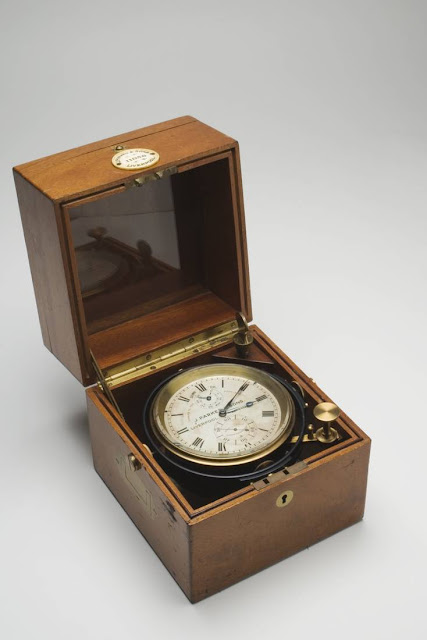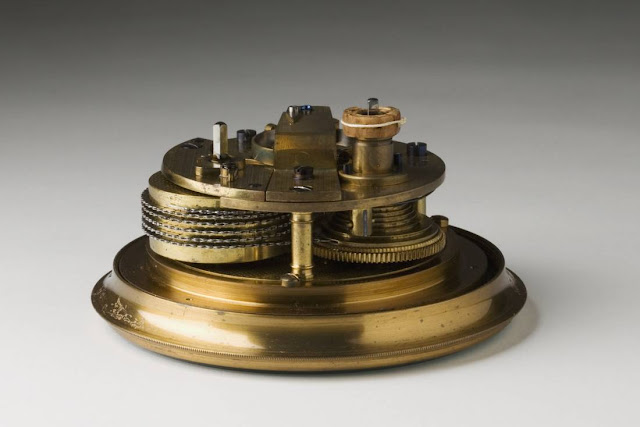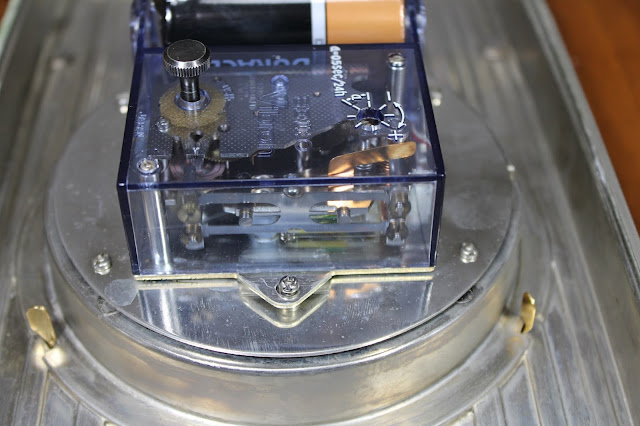John Parkes and Son Marine Chronometer, Liverpool, England 1917
John Parkes and Son Marine Chronometer, Liverpool, England 1917 Draft
?? means needs checking or more to writeYes, the most historically significant marine chronometer is John Hamilton's H4, but there is only one and it is in the Royal Observatory Greenwich. So why is this one historically significant?
A few reasons it is significant. The English clockmakers dominated the handmade production of marine chronometers through all of the 1800s. The basic design of the marine chronometer clock was substantially unchanged from the early 1800s right through the 1950s until they were replaced by chronometer pocket watches c1900, radio from c1920, then quartz clocks in the mid-1960s??. The design worked, if it ain't broke, don't fix it! Marine chronometer clocks started to be replaced by American made marine chronometer pocket watches in the early 1900s. They were mass-produced pocket watches originally developed for railroad use; more on that in another post. So almost any English marine chronometer clock is representative of their design.
Any innovation in design tended to come from outside London where the Clockmakers Guild ruled, more in another post. My clock is from a regional clockmaker in Liverpool, a major English port in the 1800s and 1900s. Parkes produced other items for the maritime trade such as sextants and compasses. So, a chronometer from Liverpool is reasonable.
The first World War caught both English and American clockmakers unprepared for the huge volume of clocks, watches and clockwork munitions timers needed for the war effort, more in another post. Even though the demand for marine chronometers soared, the handmade production volumes were limited, Parkes & Sons produced 11 in 1917, mine was one of them.
Probably most importantly, it was the only one I could afford; via eBay USA after an auction sniper skirmish at 3 AM! Restored ones sell for US$3000+.
My unrestored John Parkes & Son marine chronometer 1917
The battered box of my chronometer, but seems substantially complete.
The restored John Parkes & Son marine chronometer in the National Museum Australia







Comments
Post a Comment